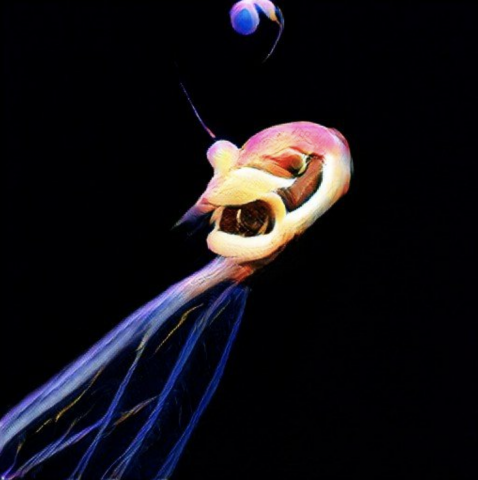
It was really cool to see the endless possible mutations that the program could create with just two images and the beautiful abstractions that they create.
[photo of flamingo and floating aquatic organism]
Interactivity and Computation • 60-212
CMU School of Art / IDeATe, Spring 2022 • Prof. Golan Levin

It was really cool to see the endless possible mutations that the program could create with just two images and the beautiful abstractions that they create.
[photo of flamingo and floating aquatic organism]

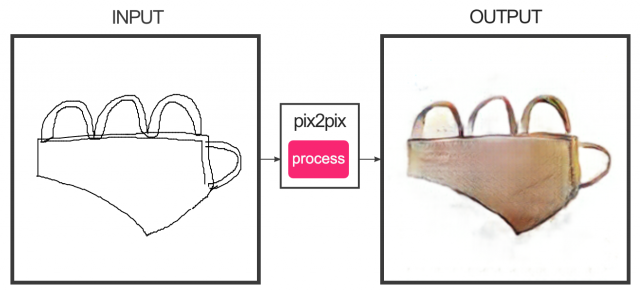
I found the tool very user-friendly and encouraged me to experiment with and challenge the program to create random objects that have nothing to do with the objects they have been trained to identify.
Refik Anadol Machine hallucinations
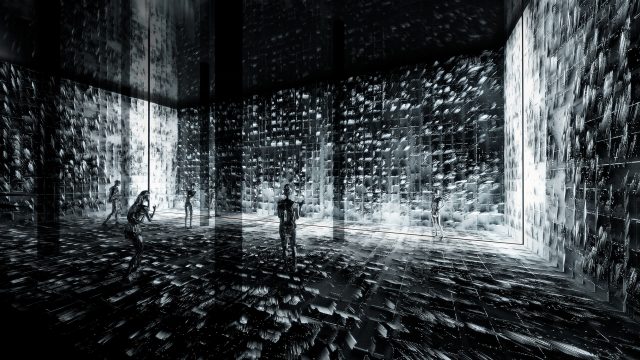
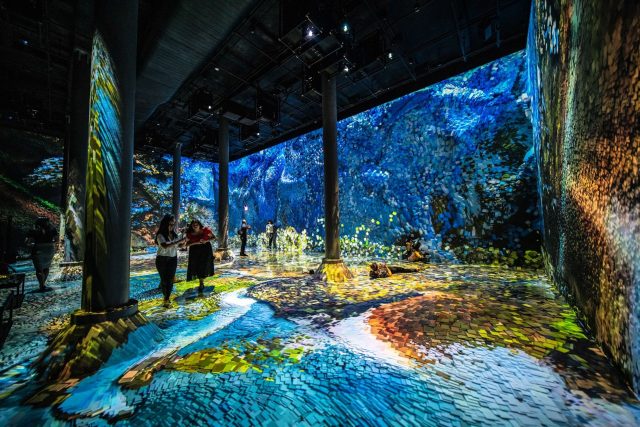
https://refikanadol.com/works/machine-hallucination/
Refik Anadol explores the mind of machines through representing memories of New York City in his work Machine Hallucinations. The work is a 30-minute experimental cinema that showcases the memories of New York through processing hundreds of millions of images. I found the idea of a machine hallucinating incredibly interesting because the visuals reflect on how we consciously and unconsciously perceive the city we live in. I am enchanted by Anadol’s manipulation of traditional storytelling cinematic techniques to showcase the memories of New York through a machine that has the “capacity” to dream. It awes me how data could produce such stunning visuals and immersive experiences and also the ability of machine learning to use existing information to “dream” about possible futures. I like how suggestive the visuals are, seemingly familiar yet distant as it represents no real place and hence its ability to portray something nostalgic like in one’s memory.

The interactions between the user and the creature (fire-pest) can be seen as prey and predator or leader and follower as the fly-like creatures are attracted towards the cursor. I wanted to try to create something that explores the behavior of pests and viruses invading an organism. As the creatures invade the circle, the circle grows smaller and smaller but grows again when it moves away from the creatures. I wished I added a more natural element to it, perhaps some creatures are hurt and stop moving or move in awkward directions.
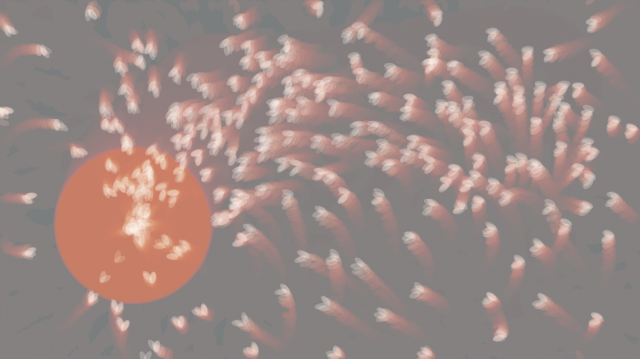
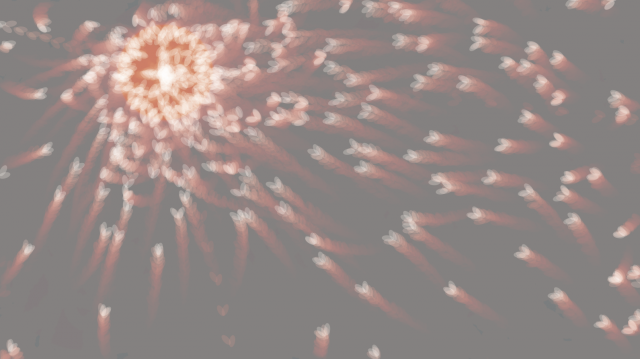
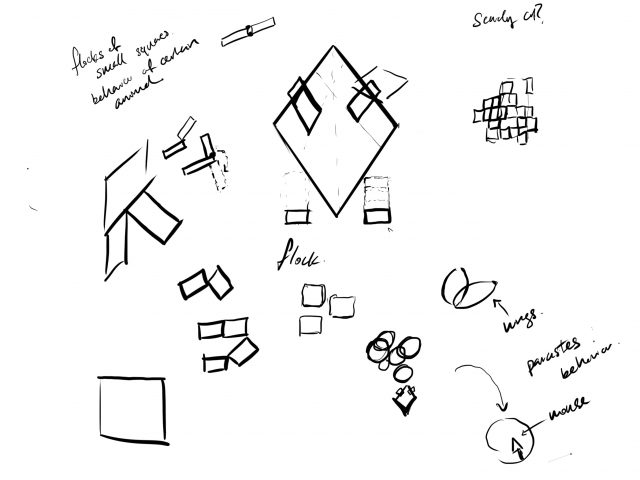

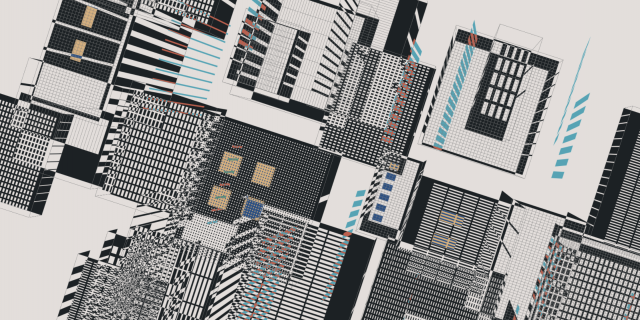
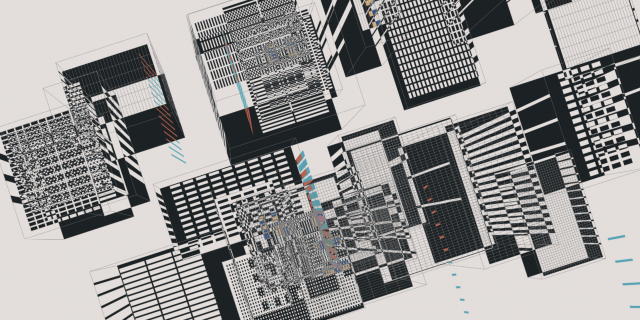
https://openprocessing.org/sketch/1486052
In this project, I wanted to play around with portraying the crowded buildings of a city, whether it’s from an aerial perspective or upfront. Having grown up living in the city, I wanted to also add an abstract and surreal element to my work that strays from the direct representation of buildings and instead reminds people of living in a city through the geometric play with negative space. I added hints of color that may remind one of the reflections from skyscrapers.
I really like the result of the generative landscape. However, sometimes the buildings can appear very detailed and noisy which I am still unsure about. I think that if viewed on a bigger screen, the more detailed generations will appear better. I struggled with the colors of the work and how much color I should add. However, I like the small hints of colors that make viewers focus more on specific areas of the work and the play with primary colors in the end.
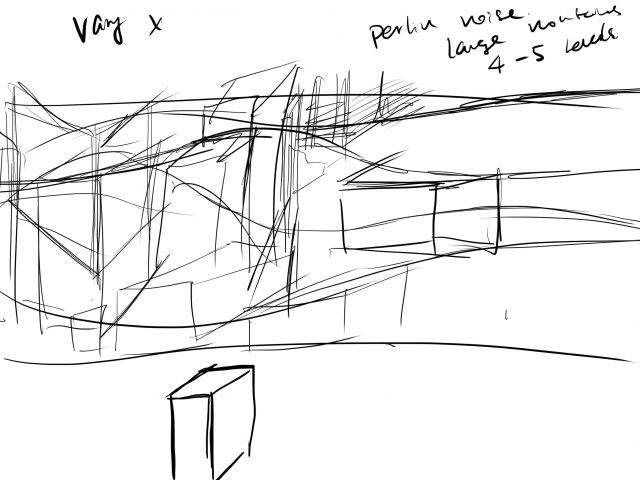


Question 1A: Clouds exhibit effective complexity. They are created by water vapor that has turned into liquid water droplets. While they are formed by the same molecules, they appear random in the sky and are influenced by factors such as temporature and altitude. Hence, there is order in how they are formed and but randomness in their formations.
Question 1B: I have always felt conflicted about the problem of authorship when it comes to generative art. When I was learning about generative real-time visuals for the first time using Touchdesigner, I felt I had little control over what the real-time visuals would look like and since I was a beginner, I would just play around with different parameters and functions and end up becoming pleasantly surprised by the product of my “creation”. Looking back at it, I would say the machine was more of a creator than myself because I had no control over the end product. However, now that I have more experience with the application, I can effectively create my ideas instead of letting the computer determine them. In this case, I believe I have then gained authorship over the work I create because the computer has become a medium, just as paint on a canvas, to help me create my art.
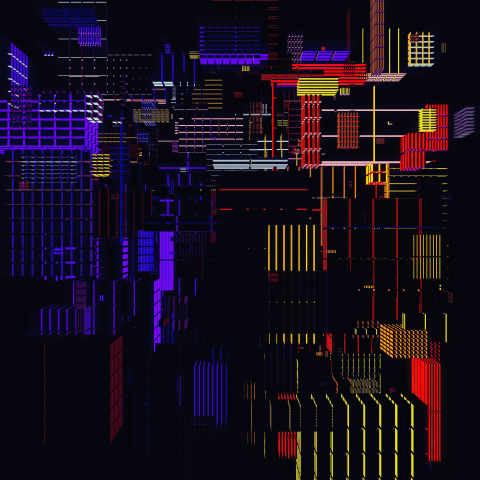
https://www.behance.net/gallery/85060381/buiiin
I chose buiiin by Manolo Gamboa Naon. The piece instantly reminded me of Hong Kong at night, looking out at towering skyscrapers. I found this piece extremely clever because from afar, the piece heavily resembles skyscrapers but when you look closer, some areas seem fictional, as if there are floating buildings. However, the colors the artist uses which contract the black background render some shapes to seem like reflections of office lights.

(day version: when mouse hovers over center)

(night version: another minute)
https://openprocessing.org/sketch/1472355
The idea for my project stems from the concept of psychological time—how we each experience time differently when watching youtube compared to listening to a boring podcast. Hence, it was my goal to experiment with the movement of circles that move at different speeds and follow different paths (representative of how we experience time differently) but still operate according to the standard time (hours, minutes, and seconds). The outer circles move according to the hour’s hand, aligning every minute. The number of outer rings with which the circles reflect the number of minutes passed in the hour. Hence, when the moving circles align with each other, the rings will experience a shift to welcome the new minute. The inner circles more clearly present the minute hand, with the same workings of the circles that represent the hour hand. When the viewer hovers their mouse over the very inner circle, the surrounding circles will start rotating at a constant angle. I did so to actively demonstrate the interruption of our personal experience with time whenever we check the clock. Finally, the colors of the clock become more monotoned and dormant when it is nighttime.
It was a challenge to find a method for the circles to move at different speeds but still manage to align at a certain time. I also had many ideas that I wanted to experiment with and found it difficult to narrow them down. At the same time, it was difficult to figure out what I could accomplish with p5js given my skills and the time that I have. However, I am happy with how my project turned out as I did a few trials which helped lead the direction to how I wanted my timepiece to look. I’m glad the circles were able to sync nicely and thus able to successfully visualize my concept.
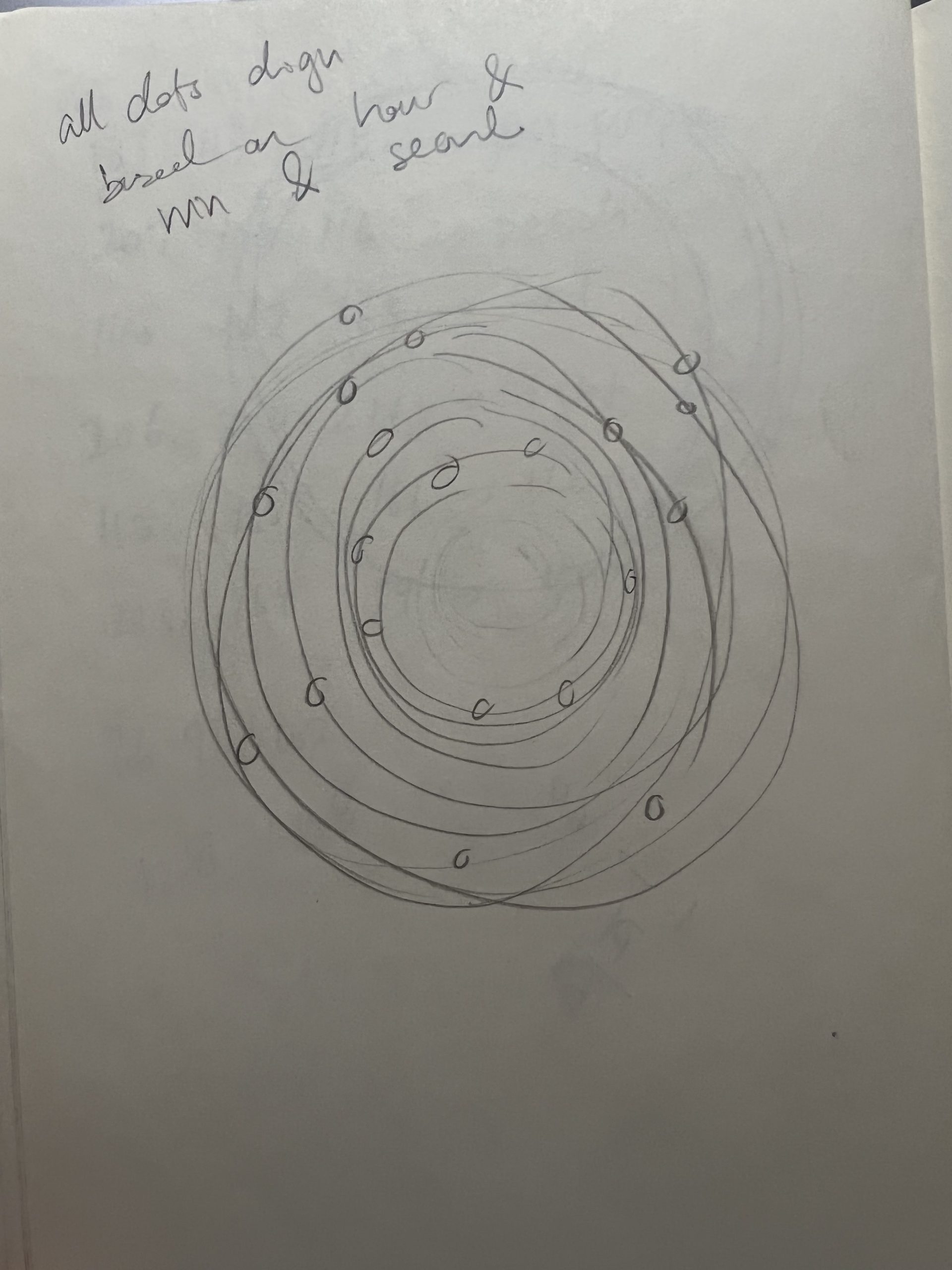
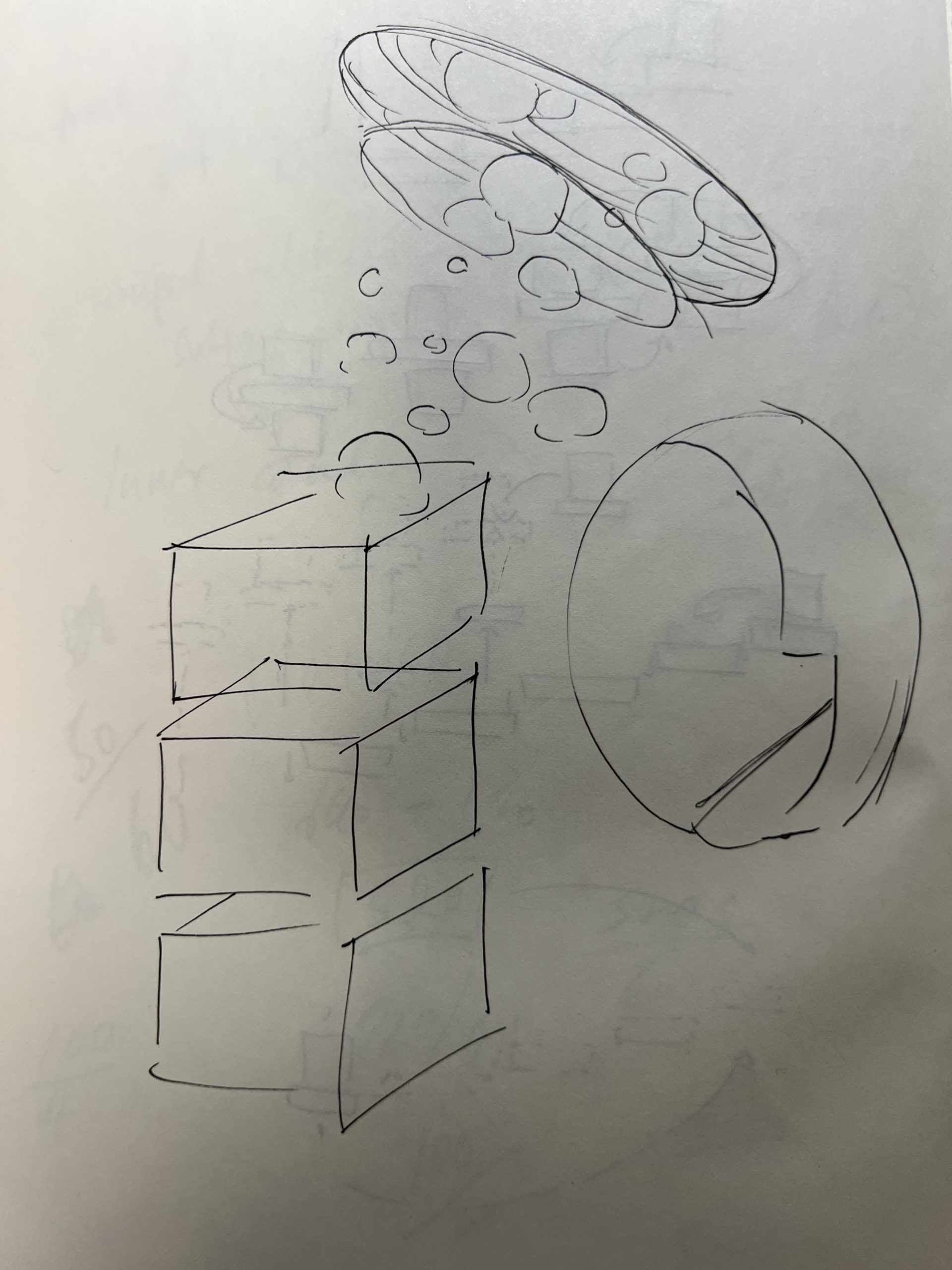
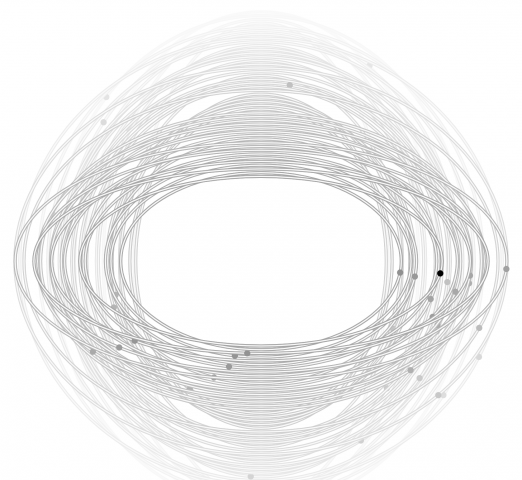

I knew I wanted to try to create the illusion of an object moving down a staircase using a loop. However, it was very difficult to time the movements of each object. After a few trials and errors, I was able to understand the key elements of creating an animated loop. I think I was able to successfully achieve the motion and rotation of the square falling. However, if I had more time, I would’ve played around with the animation of the cube (from the bottom of the staircase to the top) more. I would’ve also tried to make the floating staircase more dynamic—flying up to catch the cube at the right time.
https://openprocessing.org/sketch/1462969
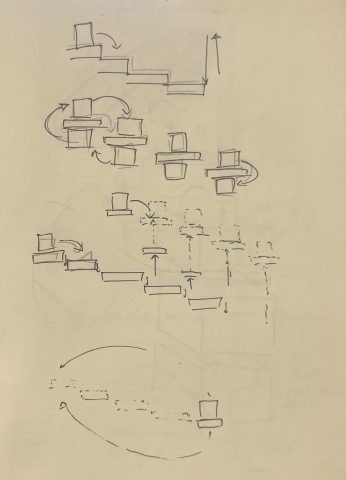
(initial sketches)
In the timekeeping excerpt written by Johanna Drucker, the concept of time as subjective became stuck to me because it is interesting how rigid time is set to be perceived while how malleable and ever-changing it seems from the human perspective (e.g. waiting in line for food when you’re hungry makes it seem like time passes very slowly). On another note, I know a close family friend who has a leap year birthday on February 29th so I’ve always had the misconception that leap years would happen every 4 years and was surprised to find out that this is actually false.